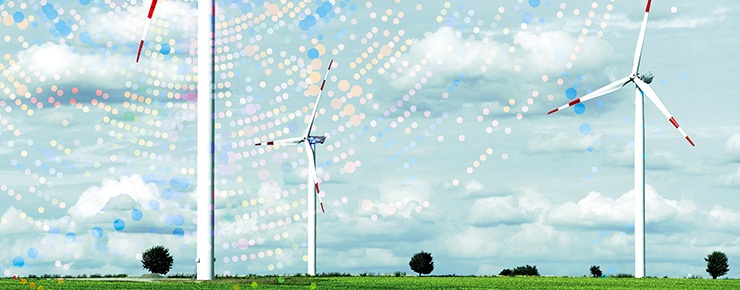
“Blow, blow, thou winter wind,” sadly sings a character in Shakespeare’s As You Like It. The sentiment is understandable. Even though wind power represents an extraordinary opportunity to capture energy and transform it into electricity, the wind cannot be counted on. Sometimes it blows, and sometimes it doesn’t.
Unlike ceaseless rivers generating steady hydroelectric power, the windiest places in the world can suddenly turn calm–like after the proverbial storm. The variability of the wind makes it difficult to integrate wind power with other forms of energy across the energy spectrum.
This outcome is unfortunate, especially since renewable energy from the wind is the fastest growing form of power-generating technology, installed at a higher rate than all other types of energy generation. The solution is to engage big data analytics to build tomorrow’s Digital Wind Farm, as we are calling it here at GE, and it is real today.
This dynamic, connected and adaptable wind energy ecosystem marries our new world-class Modular 2+MW Turbines with predictive modeling software to predict wind power opportunities. Simulation software predicts wind generation outcomes by capturing and analyzing tens of thousands of data points every second on wind conditions.
When sufficient winds are projected, utilities can take advantage of this power and reduce their dependence on traditional coal and natural gas, helping plant operators comply with federal and state mandates to increase their reliance on alternative energy-without affecting the energy needs of customers.
At the same time, this intelligence assists decisions regarding the optimal build of each turbine to the specific pad location. Our new software-enabled MW platform utilizes a digital twin modeling system to build up to 20 different turbine configurations at every pad location across a site. Generators can dial in the optimum hub height, blade length and generator rating, customized to match the predicted wind conditions.
GE has now moved the needle further, incorporating this digital infrastructure within our next generation turbines. This is truly revolutionary for wind farms-better performing machines, optimized operations, and greater profitability. It’s also great news for utilities-able to capture more wind power to store in their grids, while reducing their reliance on coal- and natural gas-fired plants. And that’s great news for sustainable energy initiatives everywhere.
When tomorrow’s wind blows, this power won’t be wasted. The future of the wind industry begins right now.
This article was originally published for GE Software.
